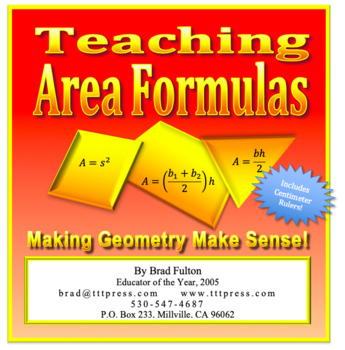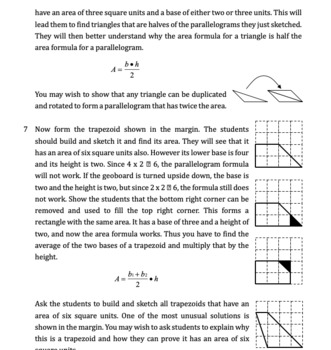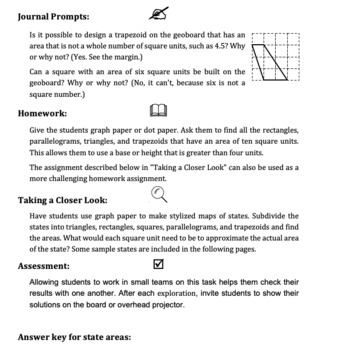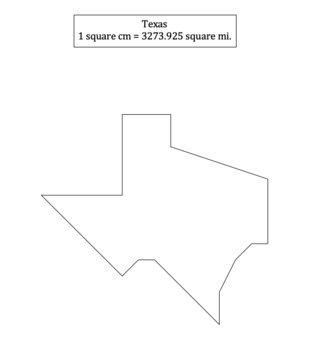Teaching Area Formulas: Making Geometry Make Sense
Teacher to Teacher Press
482 Followers
Grade Levels
4th - 9th
Subjects
Resource Type
Standards
CCSS3.MD.C.7b
CCSS4.MD.A.3
CCSS5.G.B.3
CCSS6.G.A.1
CCSS7.G.B.6
Formats Included
- PDF
Pages
15 pages
Teacher to Teacher Press
482 Followers
Description
Students will move through a seamless transition from finding the areas of squares to rectangles, parallelograms, triangles, and trapezoids.. The area formula for each polygon will build upon those they have already learned ensuring more retention and understanding of the formulas.
Then they will apply these formulas to find the areas of complex shapes — the areas of states — as they apply their skills to problem-solving situations.
Total Pages
15 pages
Answer Key
Included
Teaching Duration
3 days
Report this resource to TPT
Reported resources will be reviewed by our team. Report this resource to let us know if this resource violates TPT’s content guidelines.
Standards
to see state-specific standards (only available in the US).
CCSS3.MD.C.7b
Multiply side lengths to find areas of rectangles with whole-number side lengths in the context of solving real world and mathematical problems, and represent whole-number products as rectangular areas in mathematical reasoning.
CCSS4.MD.A.3
Apply the area and perimeter formulas for rectangles in real world and mathematical problems. For example, find the width of a rectangular room given the area of the flooring and the length, by viewing the area formula as a multiplication equation with an unknown factor.
CCSS5.G.B.3
Understand that attributes belonging to a category of two-dimensional figures also belong to all subcategories of that category. For example, all rectangles have four right angles and squares are rectangles, so all squares have four right angles.
CCSS6.G.A.1
Find the area of right triangles, other triangles, special quadrilaterals, and polygons by composing into rectangles or decomposing into triangles and other shapes; apply these techniques in the context of solving real-world and mathematical problems.
CCSS7.G.B.6
Solve real-world and mathematical problems involving area, volume and surface area of two- and three-dimensional objects composed of triangles, quadrilaterals, polygons, cubes, and right prisms.





